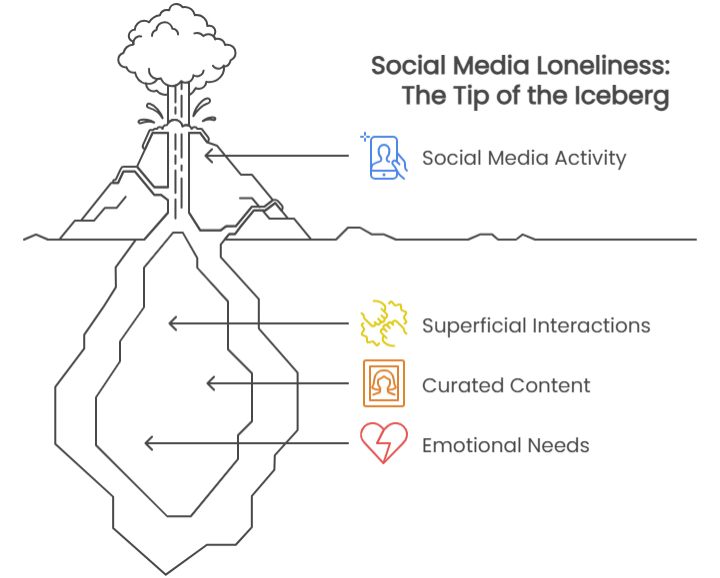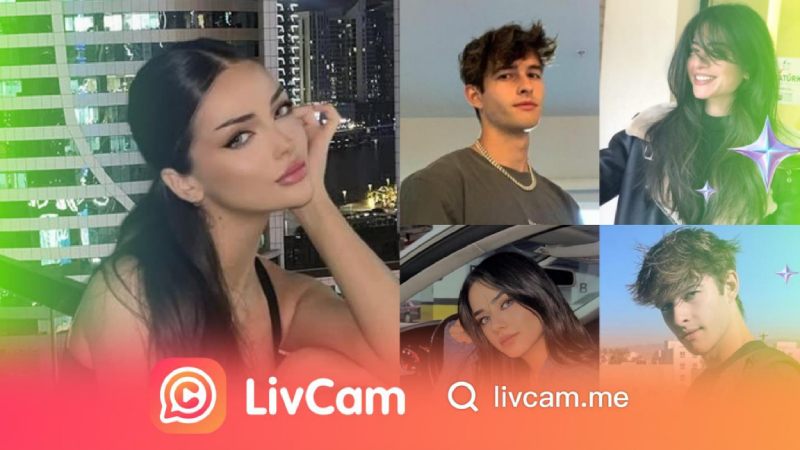Feeling Lonely in a Bustling Virtual World? It Might Be Social Media Loneliness
We live in the most connected era in history, where building connections online is easier than ever before. Friends, colleagues, and even strangers are only a message or a click away.
Social media feeds refresh constantly, showing us a steady stream of updates, opinions, and moments from the lives of others.
However, there is a severe feeling of emptiness that continues to bother most of us. So why do so many people feel such deep loneliness during the so-called most connected age? The answer often lies in what experts call social media loneliness, the paradox of feeling isolated while being digitally surrounded by thousands of people.
So what is this social media loneliness, and how can you avoid it? Let's see.

What Is Social Media Loneliness?
Social media loneliness is the feeling of emotional isolation that can develop even when a person is actively engaged online. Social media and loneliness are often linked because online interaction alone does not guarantee emotional closeness. It is not about having no connections at all, but about lacking interactions that feel genuine and fulfilling.
A person might exchange messages, like posts, or scroll through updates for hours, yet still feel unseen and emotionally disconnected. This is because the quality of engagement matters far more than the quantity of interactions.

? Potential Causes
But how does social media cause loneliness? Here are some major causes:
1. Excessive or Passive Use of Social Media
Spending large amounts of time just scrolling, without truly interacting, can deepen the sense of social media loneliness.
2. Lack of Deep Emotional Connections
Surface-level exchanges, such as liking a post or sending a brief reply, rarely lead to lasting closeness. Over time, the lack of genuine conversation can make it feel like you know many people, but you hardly have any real friends, leaving you feeling social media lonely even in active online spaces.
3. Frequent Upward Social Comparisons
Most people share only a carefully edited version of their lives on social media, which can lead you to believe they are living an ideal life. This often triggers comparisons, leaving you feeling lonelier and less accomplished.
4. Reduced Face-to-face Communication
When you devote hours to using social media, there is often less time left for in-person interactions. In the long run, this shift can weaken existing relationships and limit opportunities to build connections that actually matter.
? Difference between Social Media Loneliness and Ordinary Loneliness
Ordinary loneliness usually stems from having few opportunities for social contact or companionship.
Social media loneliness is different, as it can develop even when someone appears to have an active online presence and interacts with many people in the digital world. In social loneliness, you might exchange messages, react to posts, or maintain hundreds of online connections, yet still feel a deep sense of isolation if those relationships lack emotional depth, genuine understanding, and mutual trust.
How to Avoid or Reduce Social Media Loneliness?
While social media loneliness can feel discouraging, it is not irreversible or unavoidable. Small and deliberate changes in how you use these platforms can make a meaningful difference in how connected you feel. Here are some simple yet effective ways of reducing social media loneliness.
1. Try one-on-one video chats.
Face-to-face interaction creates a level of closeness that text or likes cannot match. Even when this interaction happens through a screen, it allows for richer conversations and more genuine emotional exchange.
Platforms such as LivCam.me stand apart from typical chatting sites online, offering a more personal experience than group chats or casual scrolling. The 1v1 private video chat feature allows for richer conversations and more genuine emotional exchange.
2. Actively comment and reply to others.
Engagement is more than simply liking the pictures and statuses of other people. In order to make deeper connections, leave thoughtful comments, ask questions, and respond when someone interacts with you. This type of active participation will help you make true relationships with others.
3. Follow, comment on, or post positive and uplifting content.
The tone of your social media feed influences your mood. Sharing encouraging stories, highlighting achievements, or commenting positively on the posts of other people can create a healthier digital environment for you and those around you. When you keep on doing this, the algorithm learns your preferences and starts showing more positive content to you.
4. Unfollow or mute accounts that trigger negative emotions.
If certain profiles leave you feeling anxious, inadequate, or drained, take control of your feed. Unfollowing or muting these accounts reduces exposure to content that undermines your sense of well-being.
5. Follow organizations that inspire you.
Find and follow accounts that align with your values and interests. Engaging with communities and organizations that inspire you can help you feel encouraged and motivated.
6. Limit the time you spend on social media.
Set daily limits for social media usage and strictly follow them. Too much time online often leads to passive scrolling, which can increase feelings of detachment.
7. Avoid social media before bedtime.
Scrolling late at night can intensify negative thoughts and disrupt sleep. Instead, use that time for relaxing activities such as reading or journaling. It is ideal to turn off all the screens at least one hour before going to bed.
8. Whenever possible, connect in person.
In-person interactions offer a level of warmth and authenticity that digital communication can never fully replicate. Even something as simple as meeting for coffee, sharing a meal, or taking a short walk together can strengthen bonds and renew a sense of genuine connection. So, if possible, try to meet with people in person from time to time.
❥Start Positive Online Friendships
Social media loneliness is real,but it does not have to define your online life.
One of the most effective ways to feel truly connected is to replace endless scrolling with richer, more personal interactions. That is where LivCam.me stands out.

Unlike traditional social platforms, where engagement often feels shallow, LivCam.Me focuses on genuine, real‑time conversations with people from across the world. Built-in privacy controls, safe chat environments, and moderation features protect your personal space while you interact. You also have the flexibility to filter matches by age and location, and even use live translation tools to bridge language gaps instantly.
What makes LivCam.me particularly appealing is its truly international community. In just seconds, you can meet someone from another country, learn about their world, and make lasting friendships. If you are ready to move beyond passive scrolling and into real human interaction, it is time to log in to LivCam.me or download the app.

